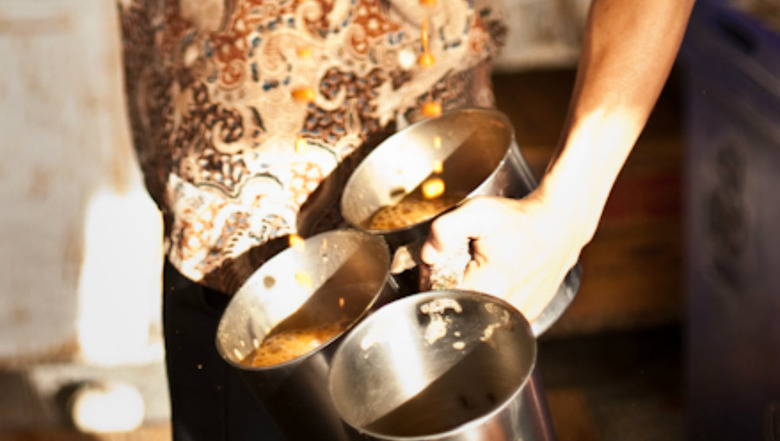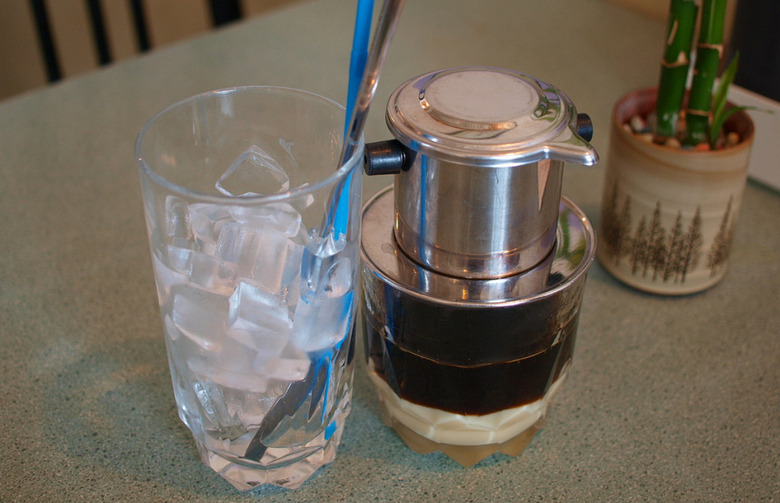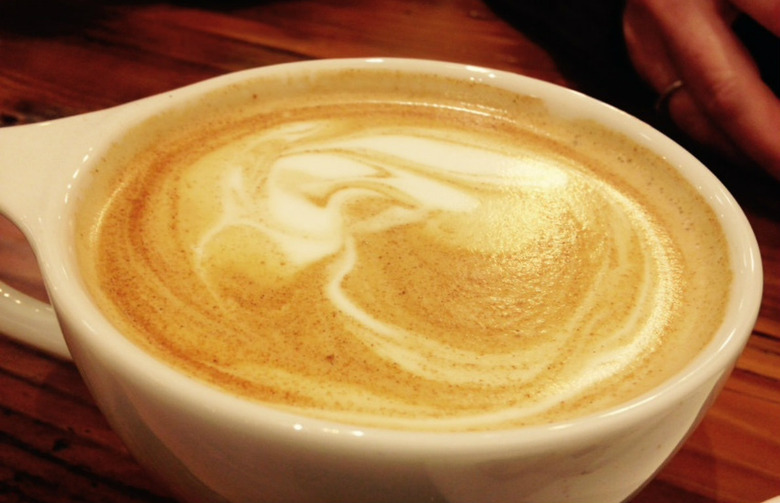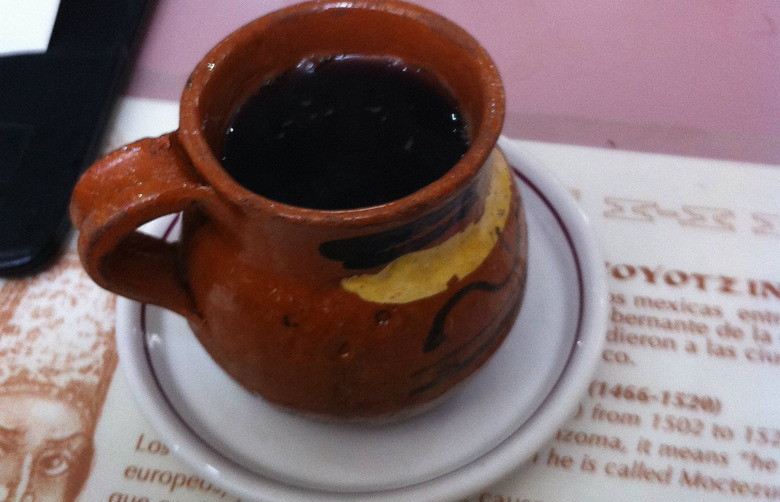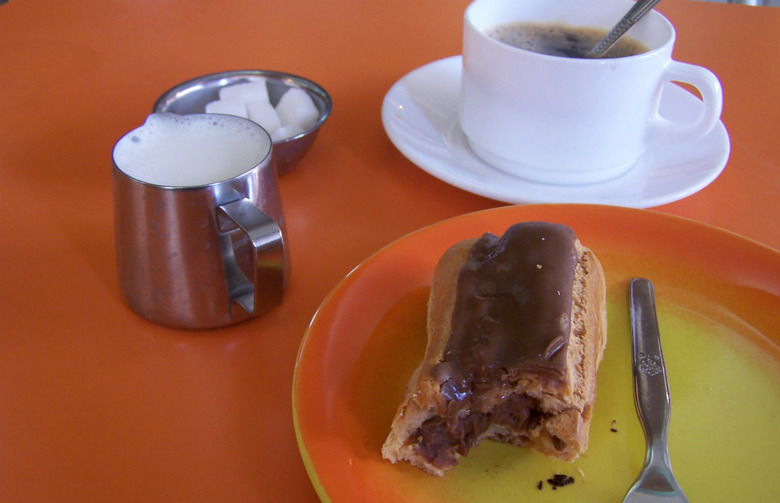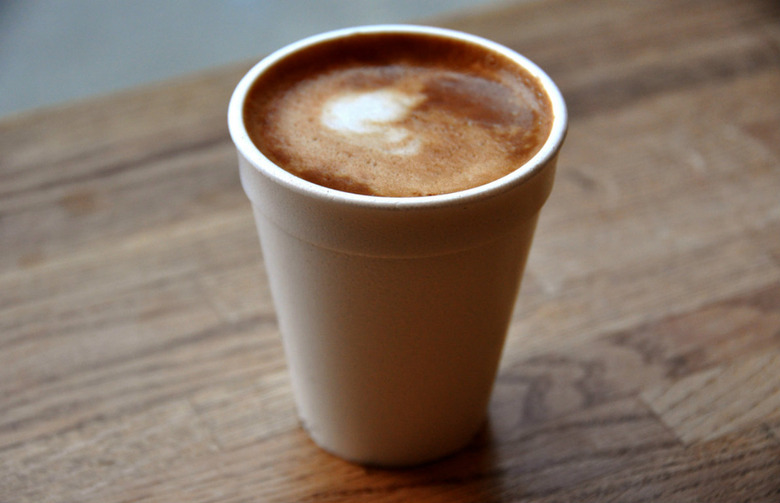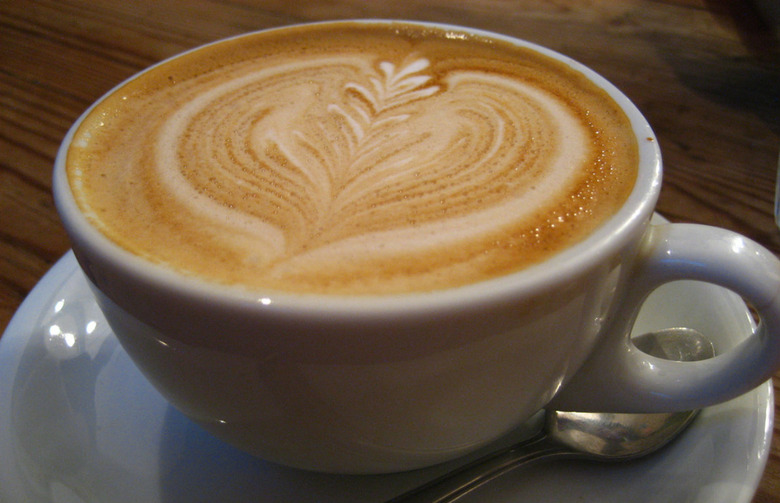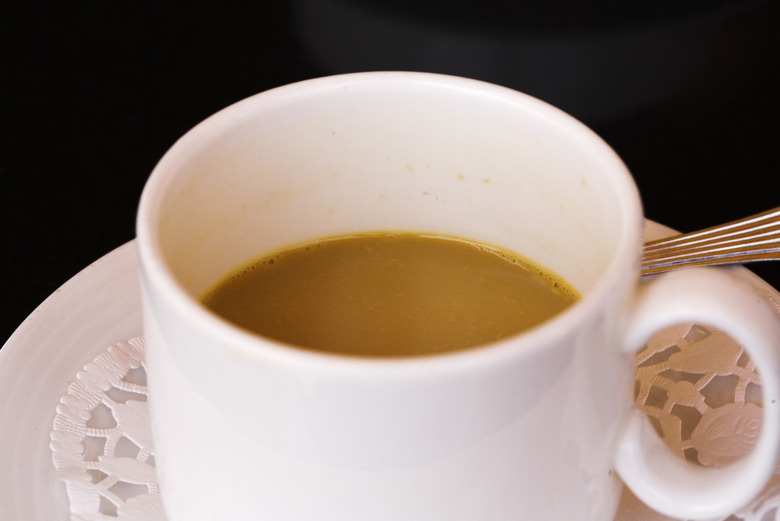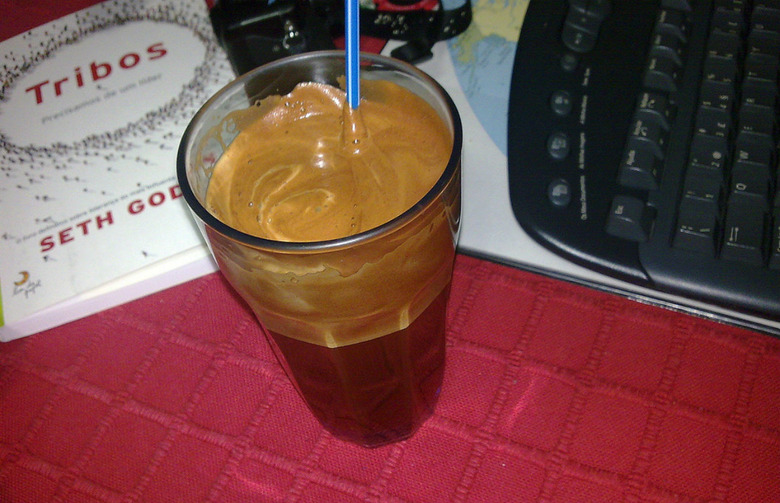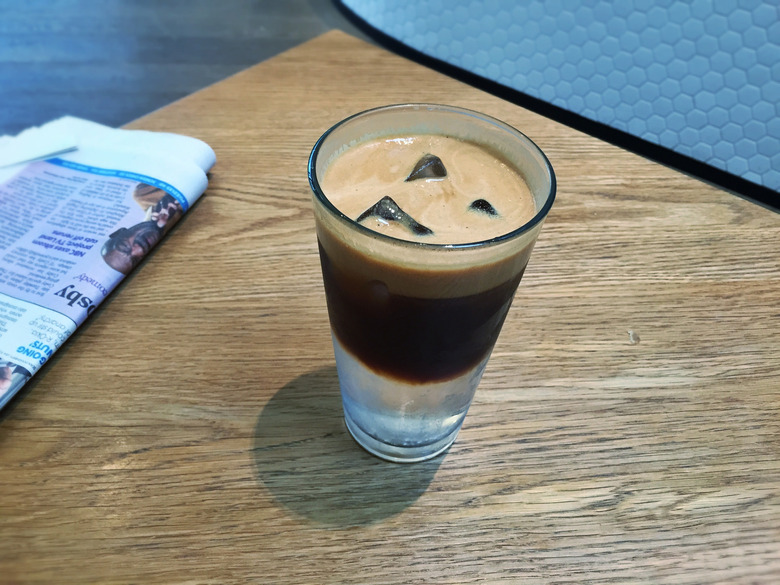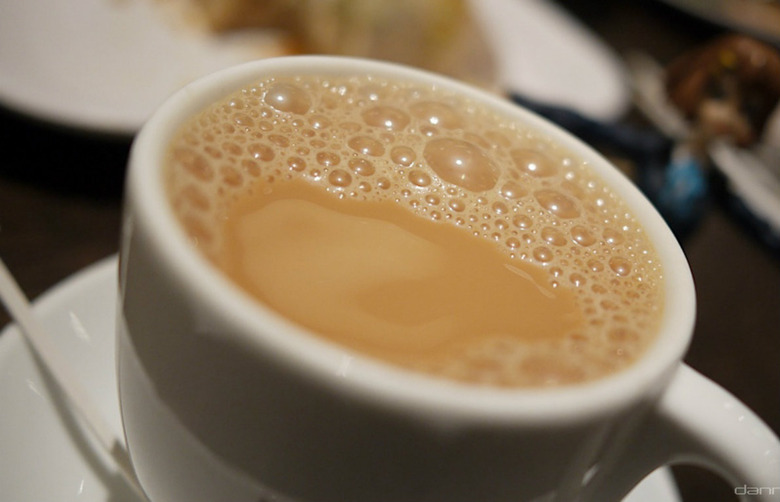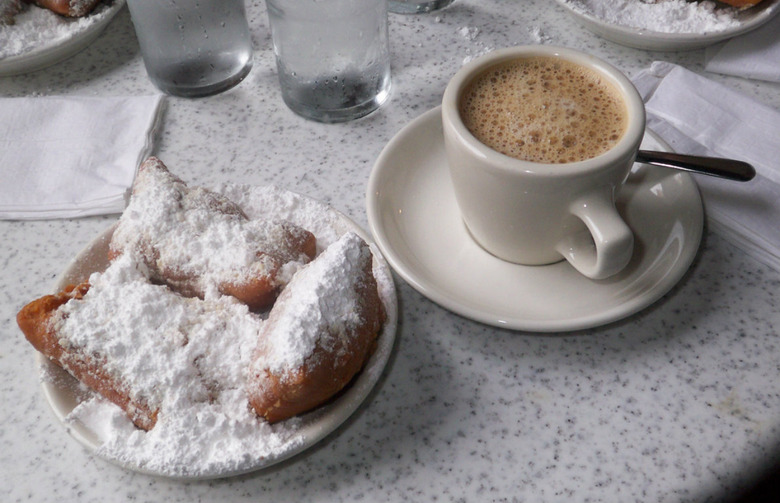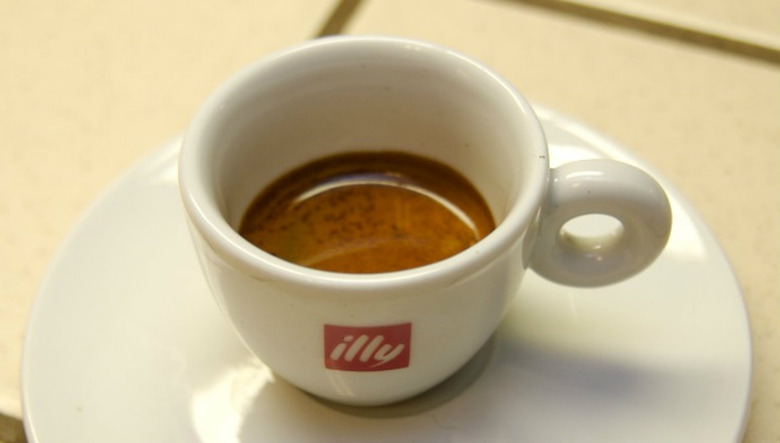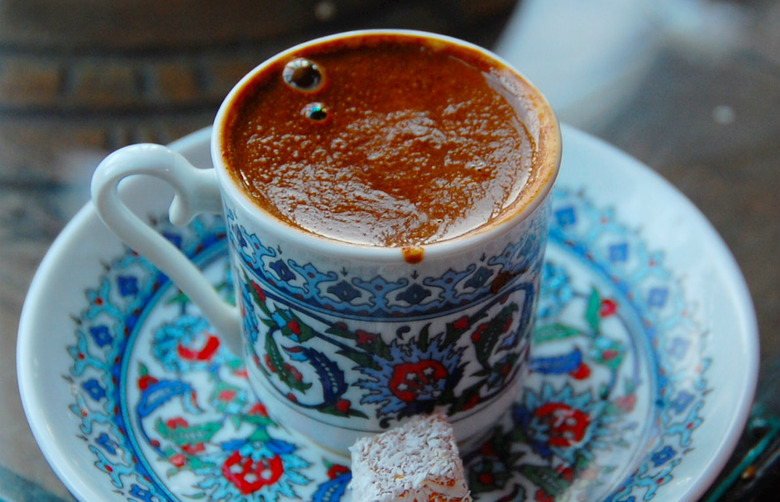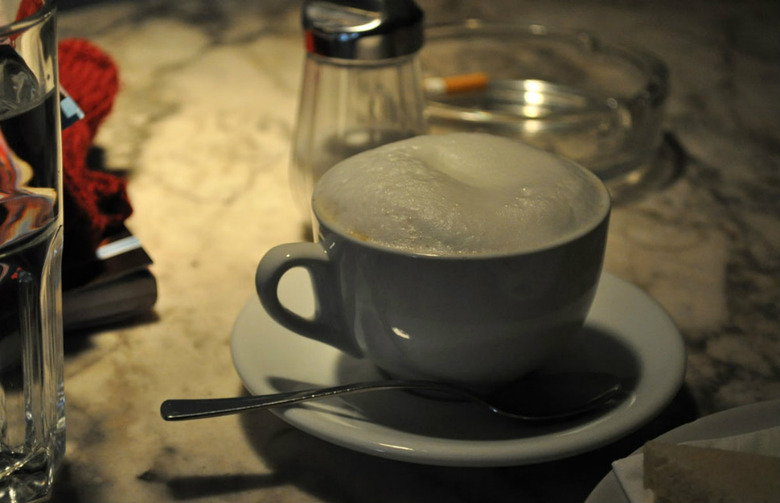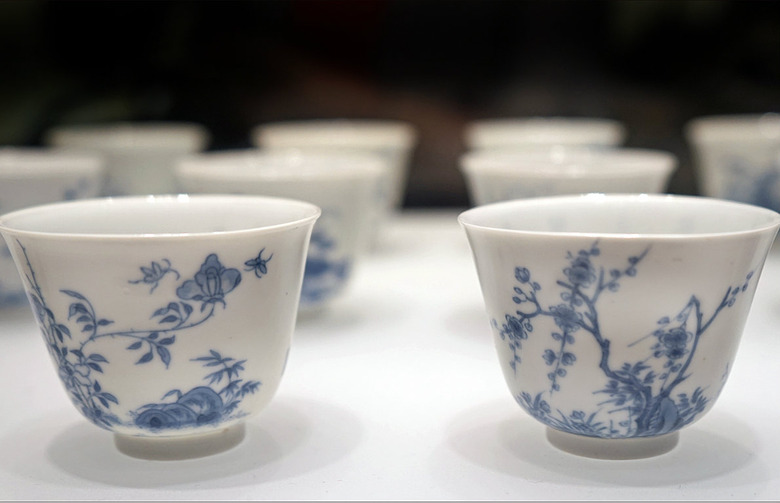18 Ways The World Drinks Coffee
"Coffee is a language in itself." That may sound like a quote from some bearded and bespectacled writer, but these words were actually spoken by the Hong Kong actor and martial artist Jackie Chan. And he's absolutely right. Coffee is enjoyed in so many ways around the world, and in styles we Americans might never think possible. For example, have you ever thought of adding pepper to your coffee, as they do in Senegal? Here are 18 ways coffee is savored around the world.
Black Tie (Thailand)
A black tie is simple hybrid of Thai iced tea, which consists of a spicy and sweet mixture of chilled black tea, orange blossom water, star anise, crushed tamarind, sugar, and condensed milk or cream, and two shots of espresso. The same drink with just a single shot of espresso is called a "red tie."
Cà Phê Đá (Vietnam)
To make cà phê đá, literally "iced coffee," dark-roast drip coffee is poured into a quarter or half cup of condensed milk and then stirred and poured over ice. It was originally made with fresh milk, but due to the lack of fresh milk available in the later years of colonial-era Vietnam, condensed milk became de rigueur. We see this as the perfect blend of the condensed milk-heavy drinks you see most commonly in Asia and the dark roast coffee favored by Europe.
Café con Miel (Spain)
A base of honey topped with espresso, steamed milk, and a cap of cinnamon powder is often served as a postprandial snack in Spain. Made with the wrong proportions of ingredients, this drink could go horribly wrong, but made correctly, the sweet burst of honey that follows the velvety bitterness of milk and espresso is just how you'd want to end your night.
Café Cubano (Cuba)
The term café cubano is often used to refer to any drink that uses Cuban coffee beans, but in its specific sense, it means espresso that is sweetened with a teaspoon of sugar as it is being brewed, which gives it a sweeter flavor and more viscous texture. Favorite accompaniments include a glass of water or a cigar. This style of espresso is popular not just in Cuba but anywhere with a strong Cuban population, such as Miami.
Café de Olla (Mexico)
Literally translated as "pot coffee," café de olla is traditionally prepared in beautifully artisanal clay pots that give the drink a distinctly warm, earthy flavor. Cinnamon and piloncillo (unrefined cane sugar) are added for that extra kick and to sweeten the drink.
Café Touba (Senegal)
This ground coffee is flavored with grains of selim (Guinea pepper) and cloves. The pepper is specially imported to Senegal from Côte d'Ivoire and Gabon, mixed in with other spices, roasted with the coffee beans, and ground into powder to give it a distinctive flavor. The drink used to only be consumed during ceremonies and commemorations, but is now widely enjoyed.
Cortado (Portugal)
A cortado, also called a pingo or a garoto, is espresso cut with a little warm milk (the Portuguese word cortar literally means "to cut"). It is very similar to the Italian caffè macchiato, where a dash of steamed milk is used to "mark" the espresso. In the United States, the same drink is sometimes called a Gibraltar (the term was coined by coffee shops in San Francisco). In Cuba it's called a cortadito, and there are several different versions, including one with condensed milk and cream on the top.
Eiskaffee (Germany)
Phonetically, it sounds like you're saying "ice coffee" in an accent, which is not incorrect — this is an iced coffee drink, after all, except so much more interesting. Why? It is made with instant coffee, topped with two scoops of ice cream, whipped cream, and chocolate chips, usually served in a glass with a stem.
Flat White (Australia)
If you think flat whites and lattes are basically the same thing, then you're definitely wrong. The subtle difference has even been picked up on by Starbucks, which now serves flat whites in America. The trick is microfoam. When poured on top of the espresso and steamed milk (latte), the microfoam adds a sort of insulation between your lips and the rest of the latte, so that the texture you meet the second you take a sip is much softer than you're used to. The best part? Microfoam lends well to latte art.
Filter Coffee (India)
Also known as kaapi (pronounced with a long "a" sound, like k-ah-pi), this sweet, milky South Indian coffee, made from dark roast coffee and chicory, is brewed in a metal container with two circular cups. During the process, the coffee grounds are compressed and brewed, resulting in a stronger product than most Western-style drip coffees. The complete drink is one part milk to the one part brewed coffee, plus sugar.
Frappe Coffee (Greece)
The proto-Frappuccino, this drink was actually invented by accident in 1957, during the International Trade Fare in Thessaloniki, by a representative of Nestlé sent to demonstrate a children's instant chocolate drink in which powdered chocolate was supposed to be added to milk and shaken in a shaker. When the representative couldn't find hot water for his instant coffee, he added the instant coffee powder to cold water and shook it in the shaker. Greece, and arguably the world, has never been the same. Though many sweet coffee drinks today are marketed under the word "frappe," the way they make it in Greece is by shaking instant coffee, sugar, and water in a cocktail shaker and adding the foam-like result to cold water and ice. Adding milk (typically evaporated milk) is an option.
Kaffe Tonic (Sweden)
A relatively new invention, this drink pairs bitter espresso with bitter bubbly — but don't get too excited, it's not champagne — it's tonic water. Sounds bizarre? It is... until you taste it on a hot summer day. The refreshing, energizing iced drink is a recent invention, the brainchild of Koppi micro-roasters in Helsingborg. It's easy enough to make for yourself at home.
Kopi Susu Panas (Malaysia)
The British introduced coffee to Malaysia in the early nineteenth century, but the style here is to serve it thick and sweet. One part condensed milk is poured into the cup first. Very strong ground and brewed coffee is added after. The coffee steeps into the condensed milk, thickening up the whole drink. When you're ready to drink it, just give it a quick final stir.
New Orleans Coffee (United States)
There is a subtle, yet dramatic, difference between a regular coffee and a New Orleans coffee: chicory. The combination originated in France, when coffee was scarce and chicory leaf extract was added to give drinkers the illusion of bold-tasting coffee, and it was brought to New Orleans by the Acadians of Nova Scotia. The result is an extra bold blend that pairs beautifully with steamed milk and beignets — eat them at the world-famous Café Du Monde in the French Quarter.
Ristretto (Italy)
Coffee is serious business in Italy, especially in Rome, Naples, and Trieste, considered the country's espresso capitals. There are many variations on espresso drinks in Italy, but there are two things the visitor should remember: one is that cappuccino is considered a breakfast drink, and nobody but a foreign barbarian would order one after dinner; the other is that the practice of serving espresso with a twist of lemon is virtually unknown in Italy. A common order for coffee-lovers, though, is the ristretto; the word literally means "limited" or "scanty," the signifies a very short (think less than an inch), very strong shot.
Turkish Coffee (Turkey)
This small yet powerful coffee packs a punch — roasted and finely ground coffee beans are boiled in a tiny pot called a cezve (traditionally made from copper) and usually prepared with sugar. The concoction is poured straight into a little cup and served hot, though you only drink it after the grounds have settled at the bottom of the cup. The tradition goes back to the Ottoman settlers in Arabia during the early seventeenth century, and the drink has remained so popular that the method of preparation has changed little since that time.
Wiener Melange (Austria)
This specialty coffee, which means "Viennese blend" in German, is very similar to a cappuccino. It is customarily served as a double espresso shot in a large coffee cup that is topped with steaming milk and milk foam. Other versions involve adding an egg yolk topped with two sugars to the double espresso before adding whipped cream.
Yuan Yang (China)
This beverage, a mixture of three parts of coffee and seven parts Hong Kong-style milk tea, is popular in many parts of China, especially Hong Kong. While initially only served by vendors and in street cafés, it's now also available in many restaurants, like Tak Yu in Hong Kong. Practice your Cantonese in advance — they don't have English menus.

